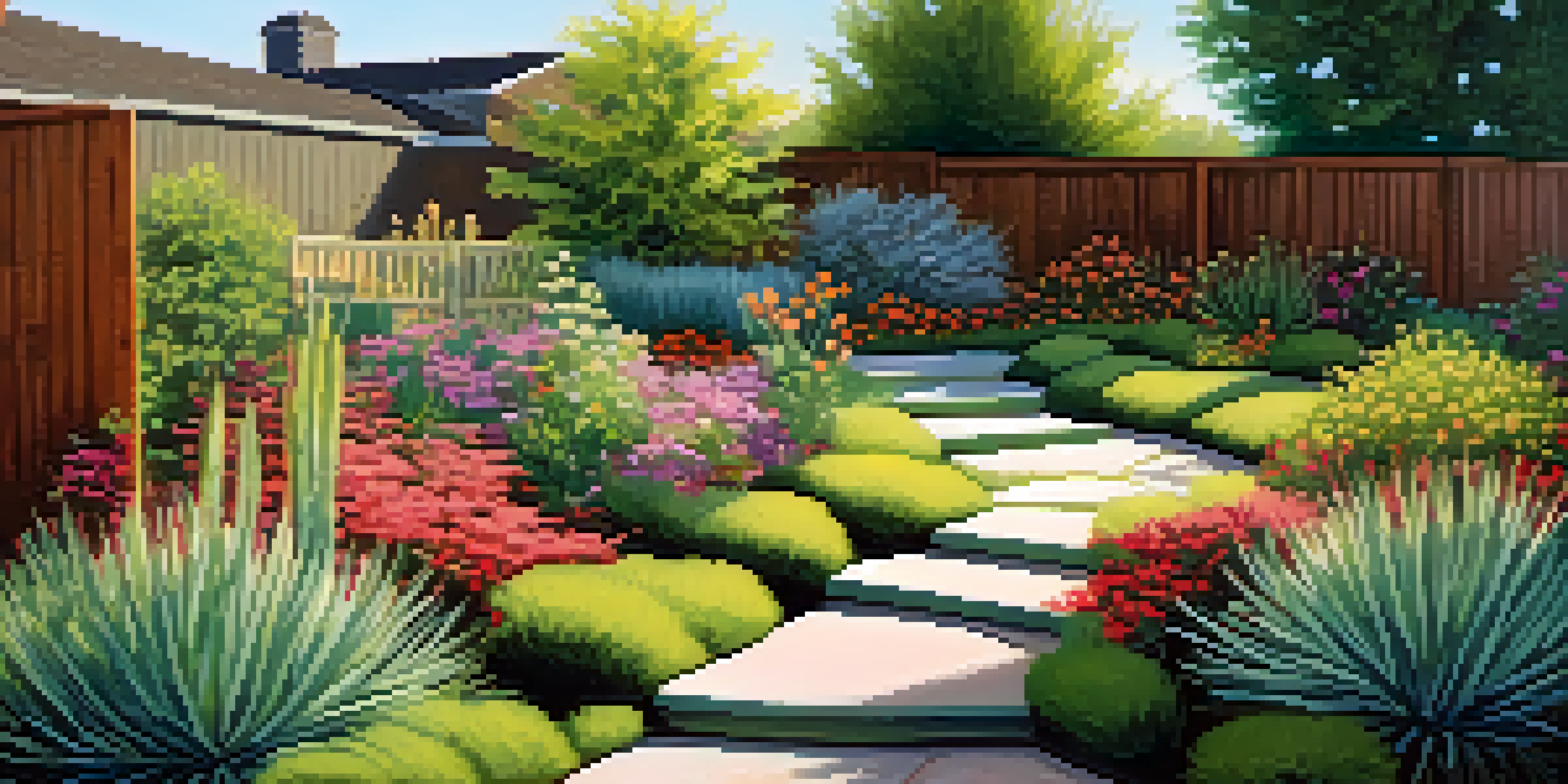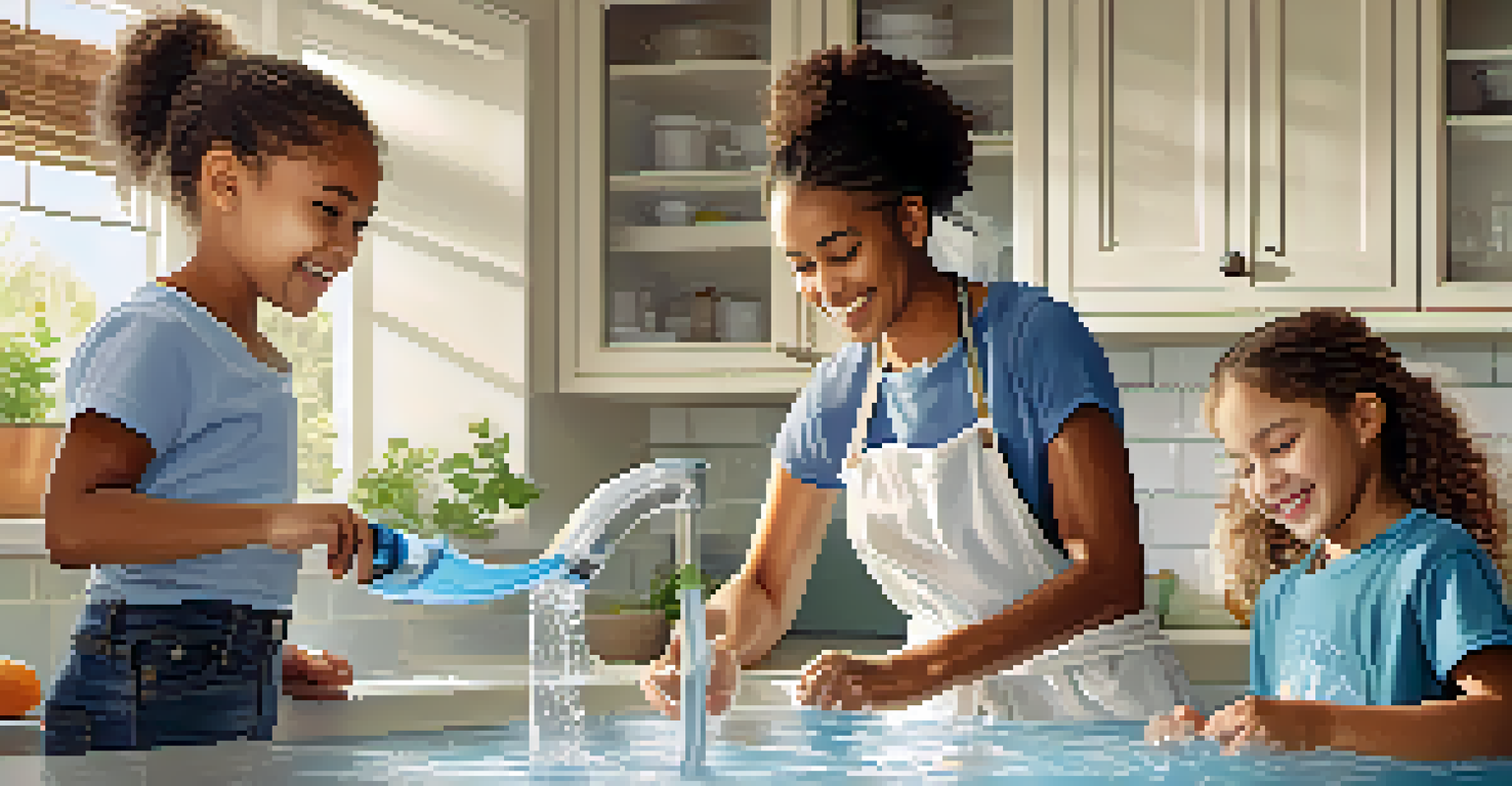Effective Water Conservation Strategies for Homes

Understanding the Importance of Water Conservation
Water conservation is crucial, especially as global water supplies dwindle. By reducing our water usage, we can help preserve natural resources for future generations. Not only does conserving water benefit the environment, but it can also lead to significant savings on your utility bills.
Water is the driving force of all nature.
Furthermore, with climate change affecting weather patterns, many areas are experiencing droughts or water shortages. This makes it essential for homeowners to adopt effective water conservation strategies. By being proactive, we can ensure that we’re not just using water, but using it wisely.
In essence, every drop counts. By understanding the value of water conservation, we can cultivate a sense of responsibility toward this precious resource, leading to a more sustainable lifestyle.
Install Water-Efficient Fixtures in Your Home
One of the simplest ways to conserve water is by upgrading your home with water-efficient fixtures. Low-flow showerheads and faucet aerators can drastically reduce water consumption without sacrificing performance. These devices are easy to install and can significantly cut your water usage.

For instance, a low-flow showerhead can save up to 2.5 gallons per minute compared to standard models. This means that if you take a 10-minute shower, switching could save you about 25 gallons of water each time! That’s a considerable amount over the course of a month.
Water Conservation Saves Resources
Reducing water usage is essential for preserving natural resources and can lead to significant savings on utility bills.
Moreover, consider replacing older toilets with dual-flush models that use less water for liquid waste. By making these upgrades, not only are you contributing to water conservation, but you’re also enhancing your home’s efficiency.
Adopt Smart Landscaping Practices
Landscaping can be both beautiful and water-efficient if planned carefully. One effective strategy is to choose native plants that require less water and are adapted to your local climate. These plants not only conserve water but also attract local wildlife, enhancing your garden's ecosystem.
We never know the worth of water till the well is dry.
Additionally, implementing xeriscaping techniques can minimize water use even further. This method involves designing your landscape to reduce the need for irrigation, using mulch to retain moisture, and grouping plants with similar water needs together.
By being mindful of your landscape design, you can create a stunning outdoor space that thrives with minimal water. This not only saves water but also encourages a sense of connection to the natural environment.
Utilize Rainwater Harvesting Systems
Rainwater harvesting is a practical way to capture and store rainwater for later use in your home. By installing a rain barrel or a more complex system, you can collect water from your roof and use it for irrigation or even household chores. This technique not only conserves water but also reduces stormwater runoff.
For example, a 1,000 square foot roof can yield over 600 gallons of water from just one inch of rain. Imagine the potential savings and benefits of capturing that water for your garden or cleaning tasks! Rainwater is typically free of chlorine and other chemicals found in treated water, making it an excellent choice for plants.
Upgrade to Water-Efficient Fixtures
Installing low-flow fixtures and dual-flush toilets can drastically cut water consumption without sacrificing performance.
Moreover, rainwater harvesting systems can often be designed to complement your existing plumbing, making them a seamless addition to your home. It’s a smart investment that pays off in both environmental and financial terms.
Practice Mindful Water Usage in Daily Activities
Being conscious of our daily water use is an easy yet effective strategy for conservation. Simple changes, like turning off the tap while brushing your teeth or taking shorter showers, can make a significant difference. Each small action contributes to a larger impact on your water consumption.
Consider timing your showers or setting a reminder to help you stay on track. You might even challenge your family to see who can take the shortest shower! This adds an element of fun while promoting awareness and responsibility toward water use.
Additionally, be mindful when washing dishes or laundry. Only run your dishwasher or washing machine with full loads, and consider air-drying dishes to save even more water. These everyday practices can lead to substantial water savings over time.
Fix Leaks and Drips Promptly
Leaky faucets and toilets can waste an astonishing amount of water. A single faucet drip can waste over 3,000 gallons a year! Regularly checking for leaks in your plumbing and fixing them promptly can be one of the easiest and most effective water conservation strategies.
Start by inspecting your home for any visible leaks, particularly under sinks and around toilets. If you notice a leak, it’s often a simple fix that can be tackled with basic plumbing skills or a quick call to a professional. Don’t let small leaks turn into bigger problems!
Educate Family on Water Use
Teaching family members about water conservation fosters a culture of responsibility and encourages sustainable habits.
In addition to saving water, repairing leaks can enhance your home’s overall efficiency, preventing water damage and mold growth. By staying proactive about leaks, you not only conserve water but also protect your home.
Educate Your Family About Water Conservation
Teaching your family about water conservation can create a culture of responsibility in your home. Engage your kids in fun activities that highlight the importance of saving water, like measuring how much water you use during daily tasks or creating a family challenge to reduce water use.
For example, you could set a family goal to reduce your water bill by a certain percentage over a few months. Celebrate your achievements together and encourage everyone to share their own ideas for saving water. This collaborative approach fosters awareness and motivates everyone to contribute.

Remember, children who learn about conservation early on are more likely to carry those habits into adulthood. By educating your family, you’re not just saving water—you’re cultivating a sense of stewardship for the planet.